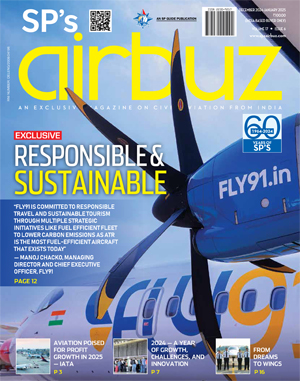Ray of Hope

A new window of opportunity, albeit a small one, is finally available to an airline industry struggling for survival
Civil aviation and the national economy are interrelated and growth in these two areas mutually drives each other generating huge employment opportunities. The boom in India’s airline industry began in 2004 when the low-cost carrier (LCC) concept was ushered in. Since then, passenger traffic has maintained a high growth rate clocking 18 to 20 per cent per annum. Today, India is the ninth largest civil aviation market in the world and ranks fourth in domestic passenger traffic. As per the Airports Authority of India (AAI), passenger handling capacity at India’s airports has risen from 72 million in 2006 to 143 million in 2011 and is expected to exceed 450 million by 2020. This will make India one of the four largest aviation markets in the world.
Since the early 1990s, the time that the aviation sector was liberalised as a part of economic reforms, the size of the fleet of airliners with the Indian carriers has more than quadrupled. The Boeing India Market Outlook 2012 released in September this year, estimates that “By 2021, the Indian economy will be the fifth largest in the world and by 2031, the fourth largest. India’s commercial aviation fleet is likely to grow by four and a half times in size in the next 20 years and that Indian carriers will take deliveries of 1,450 airplanes in the next two decades.” Such is the potential for growth of the airline industry in India. But the big impediment in the growth of the industry has been and continues to be the problem of easy availability of funds.
When it began seven years ago, the boom in the airline industry held great promise for the investors who were responsible for the mushrooming of private carriers on the Indian aviation scene. But today, somewhat tragically, most of the Indian carriers appear to be wobbling in financial quagmire. High and continuously rising fuel prices, inordinately high taxes and unreasonable airport charges have pushed up operating costs and fierce competition amongst the airlines, have shrunk or even wiped out profit margins. Consequently, airlines are suffering losses on a daily basis. One estimate is that Indian carriers on an average are losing around Rs. 2,500 crore per year and are burdened with a combined debt of about Rs. 48,000 crore.
As per the Centre for Asia Pacific Aviation (CAPA) India, the way things are going, estimates are that India’s airlines could report a combined loss of Rs. 7,700 crore for the current financial year. Much of this would be on account of the disastrous financial performance of Air India and Kingfisher Airlines. With the exception of IndiGo, all other private carriers are accumulating losses though not as high as the national carrier or the “King of Good Times”! Earlier this year, in an attempt to alleviate the problem, the government approved a proposal from the airlines that they be permitted to import aviation turbine fuel for their use. The aim of the exercise was to avoid import levies payable to the government. On the face of it the proposal seemed attractive, but in practical terms its viability is yet to be established.
To survive and maintain normalcy in operations as also to sustain a respectable rate of growth, Indian carriers need continuous funding as they do not generate surpluses. It is estimated that all the private carriers put together would need funding to the tune of Rs. 15,000 crore over the coming year. Unfortunately, the financial institutions in the country, for obvious reasons, have lost confidence in the viability of the industry and are not prepared to enhance exposure and other non-airline investors are not forthcoming. Even the promoters of airlines quite understandably seem to be reluctant to increase the levels of investment in their own ventures. Turning an airline around will require substantial recapitalisation and a potential investor would be more comfortable investing huge sums if one of the strategic partners is a foreign carrier of repute. The most expedient option, therefore, is to open up the industry to investment by foreign airlines that can also bring in management expertise and viable business models to pull the Indian airline industry out of the morass.





